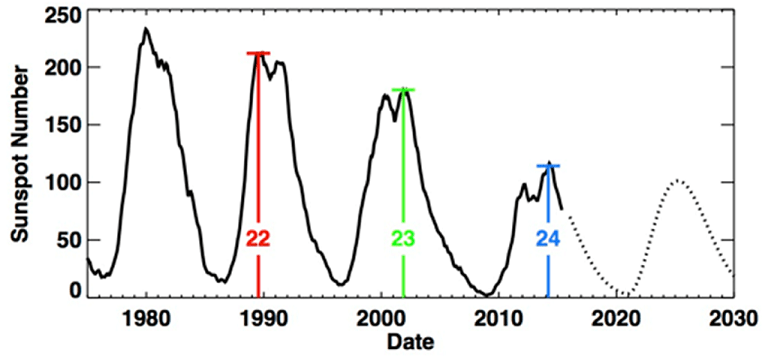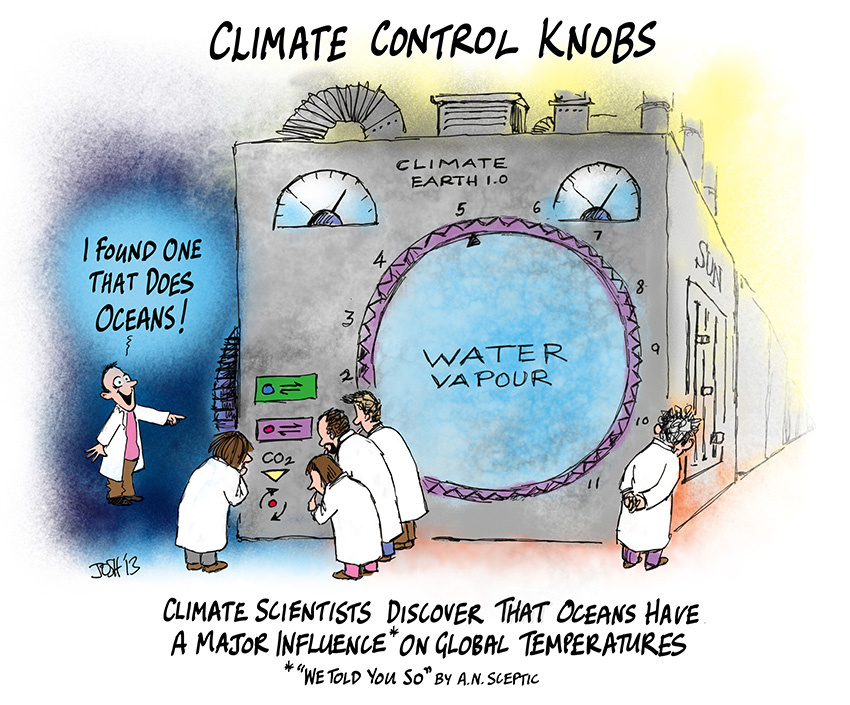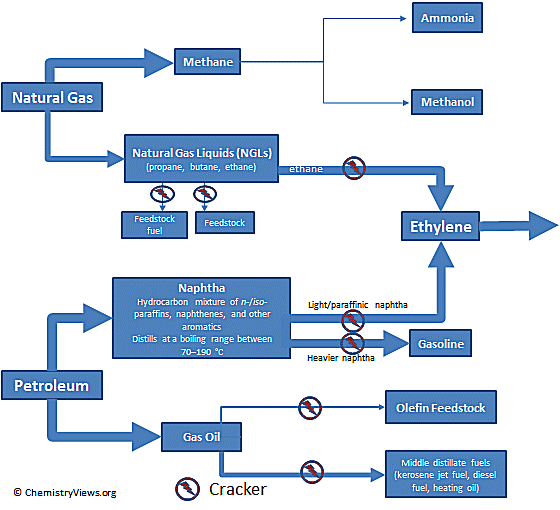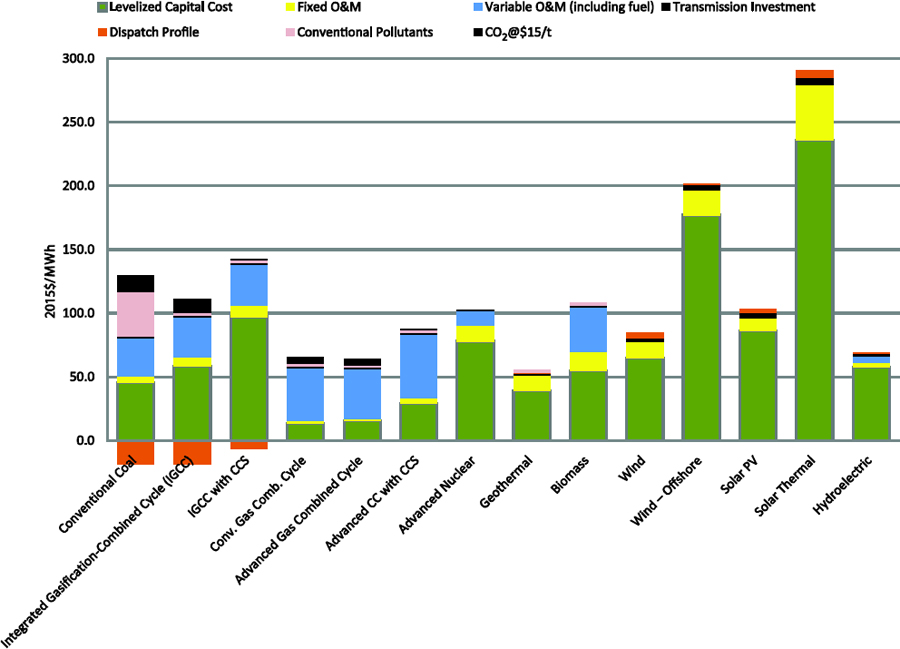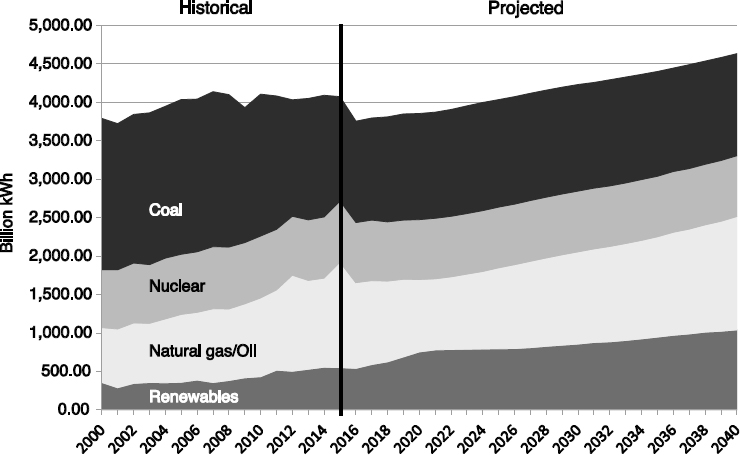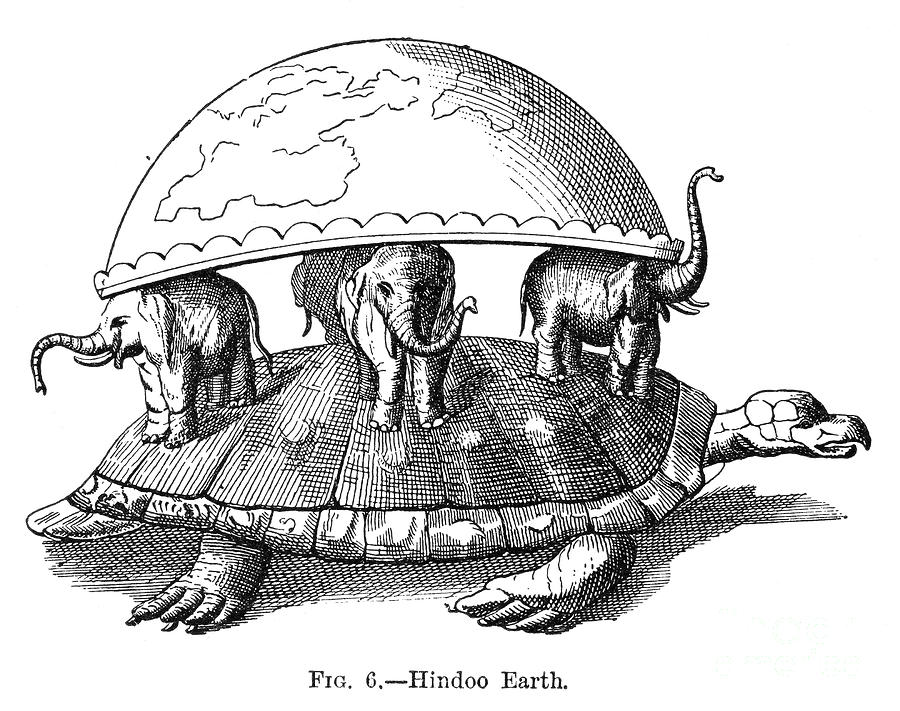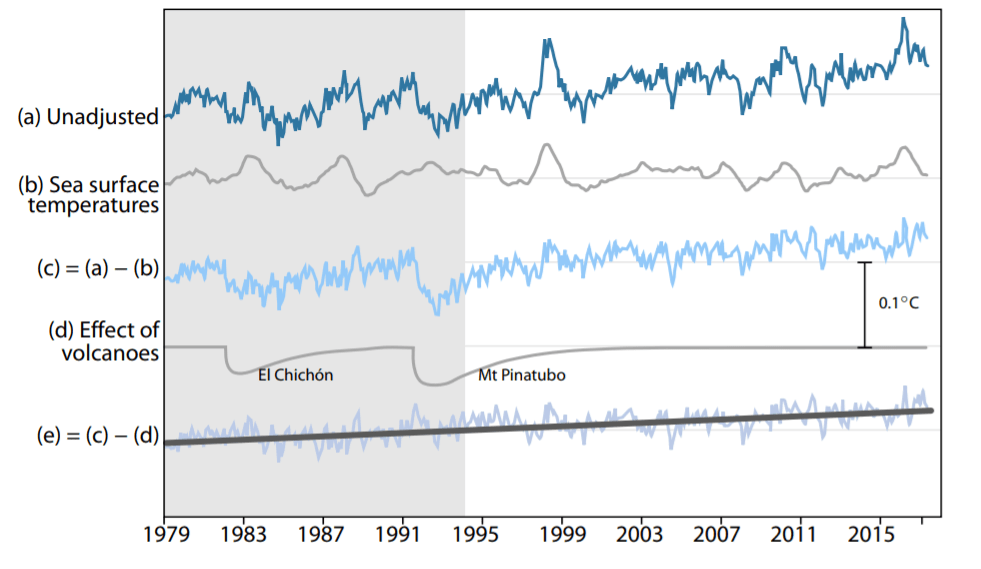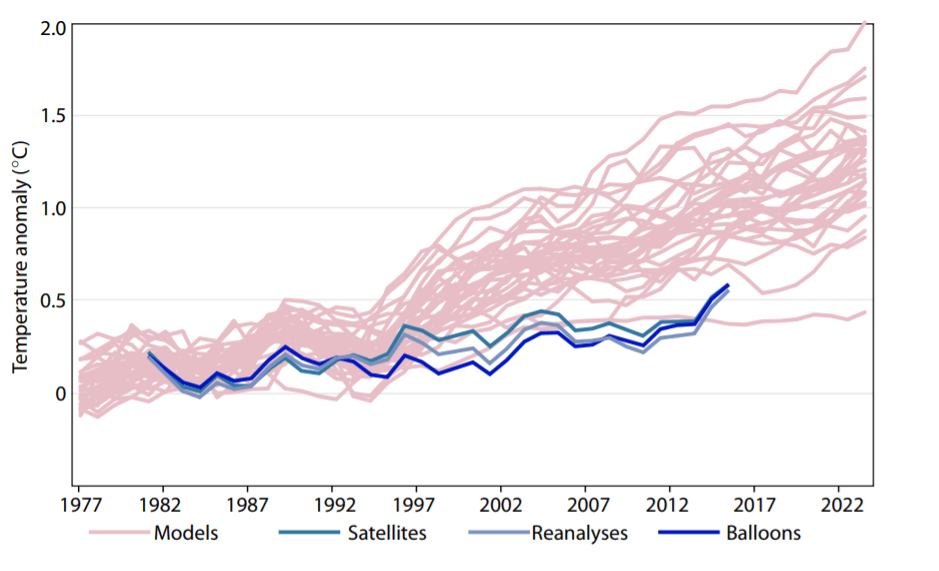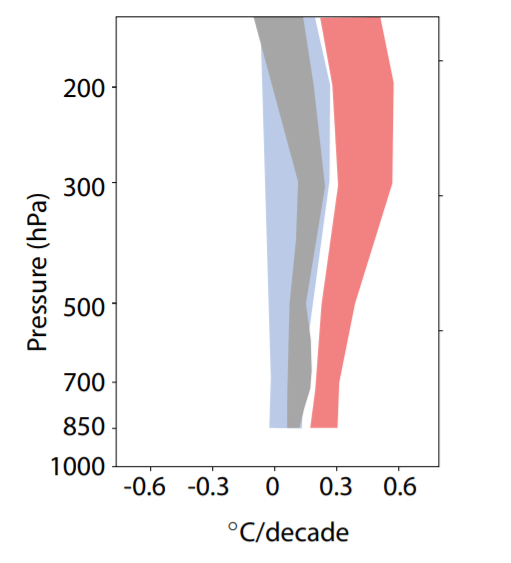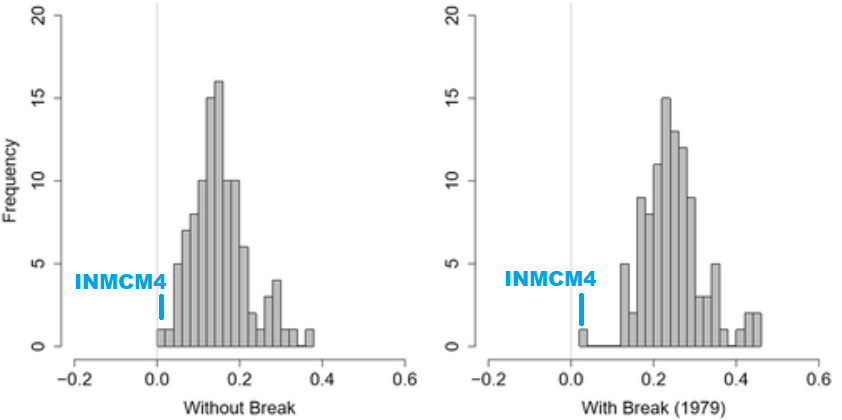
Green energy initiatives are steadily undermining the electrical grid essential to modern society. Coal-fired power is often termed “Climate Enemy #1”, but the War on Nuclear Energy started much earlier and has been more successful. This century is seeing many NPP closures, and almost none constructed.
The problem is that Nuclear plants produce neither dispatchable nor nondispatachable power. Capital costs are high while variable costs of nuclear electricity are very low, and plants have long 30 to 40 year lifetimes. Nuclear is economic as a base load producer of reliable electricity 24/7. It is not intermittent like wind and solar, and not very flexible like coal, gas or hydro to ramp up or down to meet changing demand. As we shall see, public policies as well as markets are now skewed in favor of wind and solar. The deck is stacked against Nuclear, and base load supply to electrical grids is threatened, not to mention dreams of zero carbon power production.
Update June 5, 2019 Ohio House passes bill to save nuclear power plants with Democrats Support Reuters
Update May 31, 2019 at bottom Democrats’ Curious Disdain for Nuclear Power

Background: War on Nuclear Power
From Environmental Progress, excerpts in italics with my bolds.
Nuclear has declined as a share of global electricity since 1995, and in absolute terms since 2006.
Nuclear’s underlying problem has to do with the well-funded and well-organized war against it that began in the 1960s.
Anti-nuclear groups opposed nuclear for being abundant and cheap and sought to make it expensive and scarce.

Anti-nuclear groups and individuals have consistently advocated coal and natural gas instead of nuclear for 40 years, and often accept contributions from fossil and other energy companies.
Even though nuclear is the safest way to make reliable electricity, it is regulated as though it is the most dangerous.
Opponents of nuclear have won large federal subsidies for wind and solar that have been in place for a quarter-century, and state clean energy mandates that explicitly exclude nuclear.
While it is tempting to blame low natural gas prices and misplaced post-Fukushima jitters, nuclear’s troubles are rooted in regulatory capture — a capture that finds its genesis in the origins of the U.S. environmental movement. This capture is now threatening to bring this climate-friendly energy source to the brink.
Everywhere the underlying reason is the same: anti-nuclear forces, in tandem with rent-seeking economic interests, have captured government policies. On one extreme lies Germany, which decided to speed up the closure of its nuclear plants following Fukushima. In Sweden the government imposed a special tax on nuclear. In the U.S., solar and wind are far more heavily subsidized than nuclear. And states across the nation have enacted Renewable Portfolio Standards, RPS, that mandate rising wind and solar, and that exclude nuclear.
In flat contradiction of their stated views that climate change represents an imminent catastrophic threat, anti-nuclear environmentalists from Germany to Illinois to California bless the burning of fossil fuels if it means they can force the closure of a nuclear power plant.
“We don’t need nuclear power,” environmental activist Bill McKibben told an audience at Middlebury in 2014, after a showing of the pro-nuclear documentary “Pandora’s Promise.” The world, he has repeatedly insisted, can be powered entirely on wind, water and solar energies. At the same time, Vermont Senator Bernie Sanders, whom McKibben endorsed early in the Democratic presidential nomination process, and national environmental groups, were quietly blessing the replacement of Vermont Yankee with natural gas.
The problem with nuclear is that it is unpopular, a victim of a 50 year-long concerted effort by fossil fuel, renewable energy, anti-nuclear weapons campaigners, and misanthropic environmentalists to ban the technology.
The Current Battle to Save Ohio’s Electrical Grid
Jessie Balmert writes in the Cincinnati Enquirer with an obvious bias against nuclear energy and in favor of wind and solar. Energy overhaul: ‘Clean Air Program’ just for nuclear plants, not wind or solar. Excerpts in italics with my bolds.

FirstEnergy Solutions, owner and operator of the Davis-Besse Nuclear Power Station, has cleared a hurdle in its bankruptcy proceedings after U.S. Bankruptcy Court Judge Alan Koschik on Monday approved FES’ amended reorganization plan. It was the fifth revised plan filed in bankruptcy court by FES. (Photo: File)
COLUMBUS – Ohio Republicans’ energy overhaul started as a thinly veiled attempt to rescue two northern Ohio nuclear plants with new fees on everyone’s electric bills.
Now, the veil is off.
Changes made to House Bill 6 last week would direct most of the $197.6 million collected from new fees on Ohioans’ electric bills to Akron-based FirstEnergy Solutions, which operates two nuclear plants outside Toledo and Cleveland.
Renewable energy companies from wind to solar would not get a cut of this “Ohio Clean Air Program.”
In a double blow, lawmakers also axed current programs that encourage electricity providers to purchase renewable energy and help customers become more energy efficient.
And lawmakers ensured utilities could charge customers a fee for two coal plants operated by Piketon-based Ohio Valley Electric Corporation through 2030. The plants are located in Gallipolis and Madison, Indiana.
The cost of a bailout
The latest version of House Bill 6 would charge Ohioans a $1 fee each month starting in 2021 for nuclear energy. The fee is higher for businesses ($15) and industrial customers ($250 to $2,500). Those fees end after 2026.
The proposal also allows electric companies to charge residents up to $2.50 each month for the two coal plants. This isn’t a new charge for many electricity customers, who are billed between $0.51 and $1.64 a month for these plants thanks to an Ohio Supreme Court decision. (An average Duke Energy Ohio residential customer pays $0.97 a month.)
But the proposed changes would lock that fee in until 2030.
At the same time, the bill eliminates current green energy and energy efficiency requirements, which cost the average customer about $4.39 each month.
Republican lawmakers argued the state shouldn’t be picking winners and losers in the energy market. Meanwhile, the bill has clear winners: nuclear and coal.
“My goal would be we should eventually get rid of all of this stuff and just let everybody compete as best as we can,” said Rep. Nino Vitale, R-Urbana, who leads the committee where the energy bill is being debated.
But the federal government already offers tax credits and benefits to renewable energy, creating an uneven playing field, Vitale said.
“Part of this bill is to correct the distortion – not bail someone out,” Vitale said.
At the heart of the debate is whether Ohio taxpayers should save FirstEnergy Solutions.
The company, which was spun off from parent FirstEnergy Corp., filed for bankruptcy in March 2018 with more than $2.8 billion in debt.
Without help from taxpayers, FirstEnergy Solutions says the company will close its two nuclear plants in Ohio: Davis-Besse, east of Toledo, in May 2020 and Perry, east of Cleveland, in May 2021.
The two plants employ more than 1,300 skilled workers who pay taxes and raise children in northern Ohio.
“We like to produce power in Ohio and use Ohio power,” said Larry Tscherne, business manager for International Brotherhood of Electrical Workers Local 245, which represents Davis-Besse workers.
But opponents of the bailout say FirstEnergy made poor business decisions by investing in coal and nuclear plants rather than diversifying its energy portfolio. The company’s financial situation is not Ohio ratepayers’ problem.
Nuclear energy is costly compared to natural gas, coal and some renewable energy. Nuclear plants require security, disaster plans and maintenance that other plants do not. That has made nuclear energy dependent on subsidies to survive nationwide.
“Clean air is obviously good,” testified Michael Haugh with the Ohio Consumers’ Counsel. “But having state government choose outcomes in the competitive marketplace is not good.”
The Case for Nuclear Power from Steffen Henne, head of research for the Center for Industrial Progress.
Q: The Ohio General Assembly is debating a new bill that would subsidize our two nuclear plants to keep them open. Apparently, the plants produce 14 percent of the state’s power. Would shutting them down (as seems likely if the bill fails) almost certainly raise carbon emissions, at least in the short term?
HENNE: This depends on many factors, including how much electricity from other states will be imported and how much new natural gas capacity will replace Ohio’s coal fleet in the coming years to fill the gap. Ohio’s power generation is dominated by natural gas (34 percent) and coal (47 percent) right now. Taking out 14-15 percent of zero-CO2 generation immediately would definitely lead to higher CO2 emissions compared to keeping these power plants alive, even if the absolute emissions might decline over time.
It’s noteworthy that the problems of nuclear and coal power plants to turn a profit are in some significant way rooted in the presence of unreliable solar and wind. Both technologies are able to produce very cheap baseload electricity but in an environment where solar and wind can just produce when the weather is right and every other generator has to adapt to the gluts and shortfalls, the cost this creates are high for nuclear and coal plants, which have been built to run at high capacity constantly. The current nuclear reactors are usually inefficient at what’s called load following because they were not designed to do that. Although solar and wind create the problem, they don’t have to pay for the cost in the current regulatory framework.
To the extent natural gas outcompetes nuclear on fair terms, that’s a different story, but it rarely makes sense to build a new natural gas power plant if the existing nuclear capacity could still do the job. And natural gas still emits more CO2 than existing nuclear power plants in any assessment I have ever seen.
Q: Does nuclear power offer the best hope as a power source that produces energy without carbon emissions and is available 24-7? Are the Generation IV nuclear power plants as promising as their proponents claim?
HENNE: There are really only two major countries that have created affordable, abundant power with low CO2 emissions, France and Sweden, and both have done it by using nuclear technology. You can use wind and solar to some extent and at a high cost, as Denmark has done, but this is not really scalable. Denmark now has the highest electricity prices in Europe together with Germany, in large part because of their focus on wind, and they are dependent on the constant imports and exports of power to stabilize their power grid. Without the availability of large conventional power fleets in their neighborhood, the wind experiment would already be over and Danes would sit in the dark. Germany doesn’t even meet its short-term goals in CO2 emission reductions because their costly scaling of solar and wind is completely insufficient.
Yes, nuclear energy right now is the only way to reduce CO2 by significant margins without ruining the economy, grid reliability, and energy security. That is because of the inherent properties in nuclear technology, which turns an abundantly available raw material into a concentrated energy source that does not emit CO2 from a chemical combustion process.
Generation IV is an umbrella term that applies to a variety of different technologies. It is difficult to judge at this stage which of these technologies will be successful or most successful at delivering the most abundant, affordable, and reliable energy. But some of the concepts are really promising. There are, for example, fast spectrum reactors, which promise to be able to use the “waste” of other nuclear fission reactors as fuel and overall increase efficiency of the fuel. Today’s typical reactors only use a tiny fraction of the energy content in the uranium or other fuels, which means there is huge potential for efficiency increase with innovation. Other innovative approaches seek to circumvent the cost escalations in the current American regulatory and anti-nuclear social framework, which for the industry means large reactors will be delayed for years or even decades, increasing the upfront cost. Small modular reactors, which can be built in a factory instead of requiring extensive on-site work, might be a good option to reduce cost.
All that innovation potential should be exciting news for everyone concerned about CO2 emissions and the availability of affordable energy to advance human flourishing.
Q: What do you make of the fact that green organizations generally oppose nuclear power, and also insist that climate change is an emergency that must be addressed immediately?
HENNE: I think we have to recognize that for organizations like Greenpeace it doesn’t make sense to actually solve a problem. The more abstract and diffuse the doomsday narrative, the better for their business model. Both climate change catastrophism and nuclear catastrophism are really great for them.
There is also an esoteric religious component to it. The reason why wind and solar are the preferred green “solution” is that they are supposedly natural versus the “artificial” splitting of the atom. Facts don’t matter in that narrative. Although nuclear is the safest technology to generate power it is still vilified as poisonous and dangerous.
Solar and wind are not proposed because they are real solutions but because they fit into that religious thinking.
The most immoral part of it is the absolute disregard for human flourishing. If you cannot afford energy, you have no energy. If you don’t have reliable energy, you have no energy. But affordable and reliable energy is probably the most central aspect of our survival and safety, including safety from climate. Over the last 100 years, climate-related deaths plummeted. Not because the climate suddenly became so much better for us, although the mild warming and increasing CO2 over recent decades was certainly beneficial to us, but because we were able to use technology to protect us from a naturally dangerous environment. And that required the caliber of energy that so far only fossil fuels, nuclear technology, and to some extent large-scale hydropower were able to deliver on a scale of billions.
Summation from Michael Schellenberger at Quillette Why Renewables Can’t Save the Planet
The problem with nuclear is that it is unpopular, a victim of a 50 year-long concerted effort by fossil fuel, renewable energy, anti-nuclear weapons campaigners, and misanthropic environmentalists to ban the technology.
In response, the nuclear industry suffers battered wife syndrome, and constantly apologizes for its best attributes, from its waste to its safety.
Lately, the nuclear industry has promoted the idea that, in order to deal with climate change, “we need a mix of clean energy sources,” including solar, wind and nuclear. It was something I used to believe, and say, in part because it’s what people want to hear. The problem is that it’s not true.
France shows that moving from mostly nuclear electricity to a mix of nuclear and renewables results in more carbon emissions, due to using more natural gas, and higher prices, to the unreliability of solar and wind.
Oil and gas investors know this, which is why they made a political alliance with renewables companies, and why oil and gas companies have been spending millions of dollars on advertisements promoting solar, and funneling millions of dollars to said environmental groups to provide public relations cover.
What is to be done? The most important thing is for scientists and conservationists to start telling the truth about renewables and nuclear, and the relationship between energy density and environmental impact.

“Nuclear power is one of the chief long-term hopes for conservation … Cheap energy in unlimited quantities is one of the chief factors in allowing a large rapidly growing population to preserve wildlands, open space, and lands of high scenic value … With energy we can afford the luxury of setting aside lands from productive uses.”
Fifty years of empirical research show that Siri was right and the anti-growth anti-people extremists who started the anti- nuclear movement were wrong. More energy is good for people, and it’s good for nature.
Energy allows cities and agricultural intensification, which frees the countryside for return of forests and wildlife. Moving to nuclear frees us from air pollution, including carbon emissions.
Update May 31, 2019 Democrats’ Curious Disdain for Nuclear Power
Just published at National Review: Until they embrace nuclear energy as a key to reducing emissions, the party’s many presidential candidates will be hard to take seriously on climate change. Excerpts in italics with my bolds.
The Democrats’ disdain for nuclear energy deserves attention, because there is no credible pathway toward large-scale decarbonization that doesn’t include lots of it. That fact was reinforced Tuesday, when the International Energy Agency published a report declaring that without more nuclear energy, global carbon dioxide emissions will surge and “efforts to transition to a cleaner energy system will become drastically harder and more costly.”
At the same time that an increasing number of rural communities are fighting the encroachment of large-scale renewable projects, the U.S. is facing a wave of nuclear-reactor retirements. Nine reactors in the U.S. are slated to be retired over the next three years, and the IEA estimates that domestic nuclear capacity could shrink by more than half in the next 20 years. The agency points to the many challenges facing the nuclear sector, including increased regulations, low-cost natural gas, and competition from subsidized renewables.
This is, frankly, one of the biggest and longest-running disconnects in American politics: The leaders of the Democratic party insist that the U.S. must make big cuts in greenhouse-gas emissions because of the threat posed by climate change, but for nearly five decades, they have either ignored or professed outright opposition to nuclear energy. The last time the party’s platform contained a positive statement about nuclear power was way back in 1972.
America’s top Democrats repeatedly tout the need for “clean” energy and massive deployments of wind and solar power, but by denying the role that nuclear energy must play in any successful decarbonization efforts, they are ignoring the scientific consensus. If they truly care about the dangers posed by climate change, they should stand up and tell the truth about the need for nuclear energy. Until that happens, their various plans to address the issue will be impossible to take seriously.
Footnote:
Many do not realize how intermittent power from wind and solar farms cannibalize the electricity supply. Since wind and solar capacity is subsidized, any actual power they produce gets top priority for consumption, since it has little or no marginal cost to the grid. So on days when solar power is abundant in the afternoon, it absorbs the high price demand, while base load and dispatchable plants are denied that revenue. That pattern will drive those plants into bankruptcy, leaving the grid without backup power, unless more subsidies are added to keep them open.




